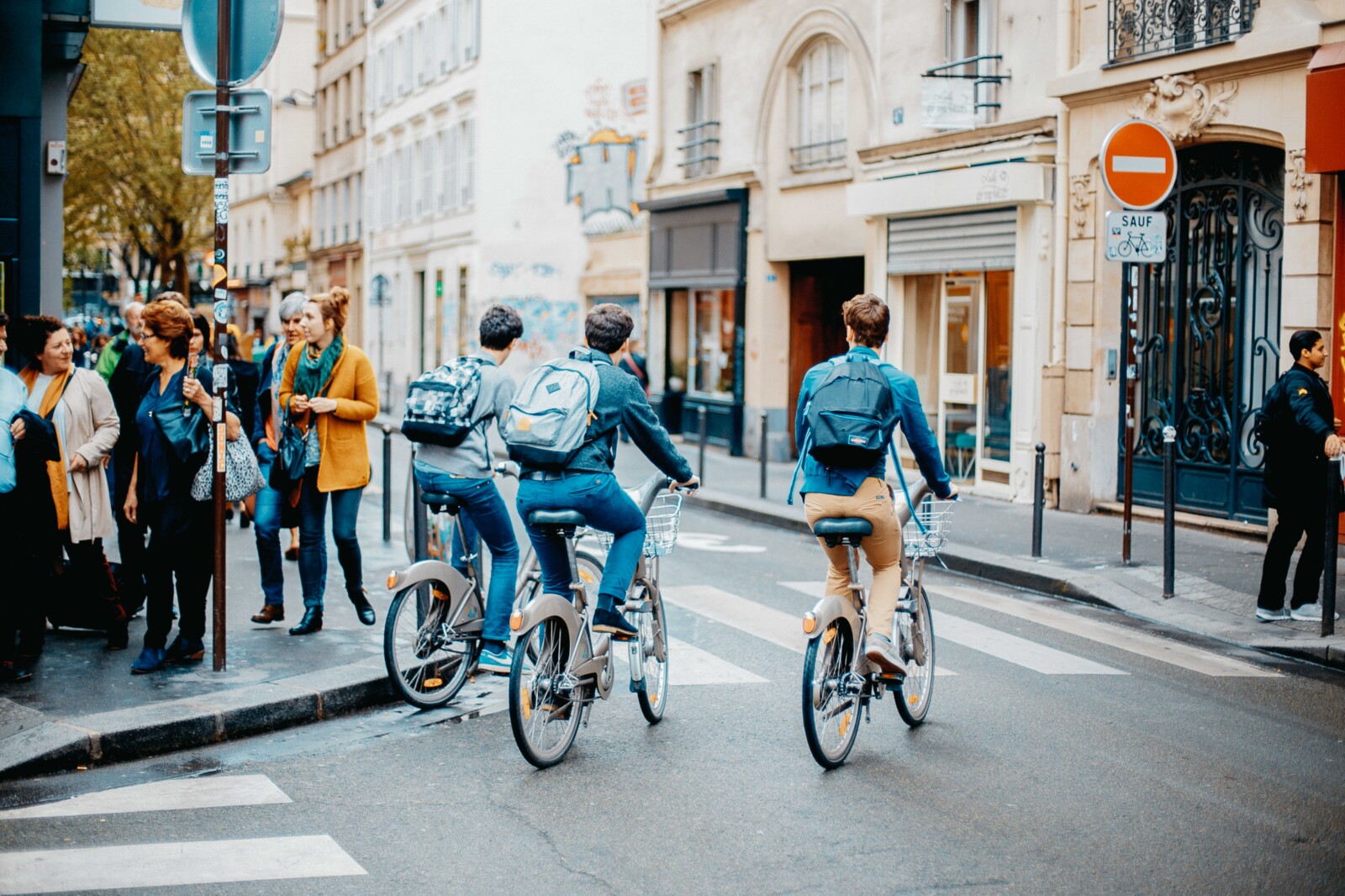Uncovering the Hidden Dangers Lurking in Everyday Life
This article presents an in-depth exploration of the hidden dangers present in routine activities and environments. Covering topics from social media challenges to urban cycling and public spaces, it provides a comprehensive understanding of potential hazards. By illuminating the implications of high-profile personal injury lawsuits, it delves into our shared responsibility for safety awareness. This piece encourages vigilance in everyday life, delivering a well-rounded perspective on the unseen risks we often overlook.

Key Takeaways
- Viral social media challenges can pose liability issues and carry risks and dangers for participants.
- Urban cycling carries inherent risks, and certain cities have higher rates of cycling accidents.
- Autumn activities can lead to accidents and common injuries, so safety precautions should be taken.
- Famous personal injury lawsuits have had an impact on personal injury law and public awareness.
The Dark Side of Social Media Challenges
Despite the popularity and excitement surrounding social media challenges, the underpinning liability and potential for harm casts a shadow of concern over this modern phenomenon. The ethical implications of viral challenges are profound, often involving corporations, influencers, or average users promoting behavior that can lead to serious injury or legal consequences. The psychology behind participating in dangerous challenges is complex and multifaceted, often driven by a desire for validation, fame, or the adrenaline rush associated with risk-taking. However, the potential for harm is significant, with numerous reports of injuries and even fatalities associated with these trends. Therefore, a comprehensive understanding of these risks, coupled with responsible social media use, is crucial to mitigating these threats.
Cycling in the City: A Risky Business
The surge in urban cycling, while being an eco-friendly mode of transportation, has regrettably led to an increase in accidents and safety risks for city dwellers. Municipal authorities and traffic experts are grappling with the challenge of improving cyclist safety while accommodating the growing popularity of this mode of commute. Evidence highlights that most urban cycling accidents occur during peak traffic hours, underscoring the urgent need for dedicated cycling lanes, better traffic management, and stricter enforcement of road rules. Prevention measures, such as cyclist education and use of safety gear, are being promoted extensively. However, a concerted, multi-stakeholder effort is needed to effectively mitigate these risks and ensure the health and safety of all road users.
Autumn Activities: A Season of Fun and Danger
While autumn offers a host of enjoyable activities such as apple picking, hiking, and pumpkin carving, it also presents certain hazards that can lead to accidents and injuries, requiring everyone to take necessary precautions. Outdoor sports, particularly, demand balancing fun and safety. The risk of sprains, fractures, and hypothermia increases with the cooling weather and slippery trails. Halloween festivities, often deemed as spooky fun, can also be an accident waiting to happen. Poorly lit streets, flammable costumes, and unsafe decorations contribute to a spike in accidents during this period. The key lies in understanding these risks and implementing preventative measures. With the right attention to safety, autumn can remain a season full of enjoyment and far removed from danger.
High-Profile Personal Injury Lawsuits and Their Impact
In the realm of personal injury law, high-profile lawsuits have had a profound influence on the development of legal standards and public perception, creating a ripple effect throughout society. Famous personal injury lawsuits and media coverage have not only shed light on negligent behaviors but also highlighted the need for legal amendments. Cases such as Liebeck v. McDonald's Restaurants, often misinterpreted due to sensationalist headlines, underscored the importance of corporate responsibility. The media coverage played a critical role, elevating these cases to the public sphere and triggering significant legal and societal changes. Meanwhile, the legal consequences of dangerous social media challenges are prompting a reevaluation of laws governing online platforms. This has led to an increased focus on ensuring user safety and a demand for strict adherence to personal injury laws.
The Dangers in Public Spaces: Injury and Liability
Public spaces, often bustling with activity, present a myriad of potential dangers and, when an injury occurs, determining liability can become a complex legal matter. Public place accidents span from slips and falls to injuries from social media challenges. These incidents have placed a spotlight on the legal consequences faced by those promoting such challenges. Laws are evolving, balancing the rights of users to express themselves and the platform's responsibility to ensure safety. As per legal experts, documenting the incident and gathering evidence is crucial for potential compensation claims. Moreover, property owners or managers may bear liability for injuries on their premises. However, the complexity of these issues underscores the importance of professional legal advice in such scenarios.
The Hidden Hazards of Home Appliances
The hidden hazards of home appliances pose a significant yet often overlooked risk, with even the most innocuous domestic devices potentially harboring unexpected dangers. Particularly, the hidden dangers of kitchen appliances and electrical hazards in the home are of concern. Toasters, for instance, can become fire hazards if crumbs accumulate and overheat. Refrigerators too, due to their constant operation, can pose a risk if not properly maintained. Electrical hazards in the home are frequently the cause of domestic fires; overloaded circuits or faulty wiring can ignite rapidly. Moreover, appliances drawing high current, such as microwaves or dishwashers, can become hazardous if their wiring becomes worn or damaged. Therefore, regular appliance maintenance and electrical system checks are vital to minimize these risks at home.
Unseen Risks in the Beauty and Personal Care Products
Over 60% of women use more than 12 personal care products daily, yet many are unaware that these items may contain harmful chemicals and toxins. The hidden risks in beauty products are often overlooked, with consumers captivated by promises of rejuvenation and radiance. Yet, the truth about personal care ingredients can be startling. Parabens, phthalates, and formaldehyde releasers are just a few examples of potentially hazardous substances lurking in everyday items. Furthermore, the US FDA does not require cosmetic ingredients to gain approval before hitting the market, leaving a gap in safety checks. Hence, it is crucial for consumers to scrutinize product labels, understand potential risks, and make informed decisions regarding their beauty regime. This not only promotes personal health but also encourages manufacturers to prioritize safer ingredients.
The Silent Threat of Indoor Air Pollution
Addressing the silent threat of indoor air pollution requires understanding its covert nature and the potential health risks associated with long-term exposure. Indoor air quality, often overlooked, is critical for maintaining good health. Adverse health effects can range from mild discomfort to severe illnesses, including respiratory diseases and heart conditions. Pollutants such as radon, mold, and volatile organic compounds, among others, can significantly degrade indoor air quality. Long-term exposure may lead to chronic health effects, emphasizing the urgent need for regular air quality checks and pollutant source control. Encouragingly, technology advancements can aid in monitoring and improving indoor air quality. Ultimately, recognizing and addressing this silent threat demands a concerted societal effort.
Food Contaminants: What’s Really on Your Plate
We need to be aware and informed about the potential contaminants that might be lurking in our daily meals, posing a significant risk to our health and wellbeing. Food contaminants, such as pesticides, heavy metals, and additives, have been linked to a range of health issues, from allergies to chronic diseases. Safety regulations and enforcement play a critical role in minimizing these risks. However, gaps and inconsistencies in these standards worldwide raise concerns about the efficacy of current measures. The impact of food contaminants on public health is profound, affecting millions each year. As consumers, we must stay informed and take proactive measures to ensure that what we put on our plate is safe and nutritious.
The Invisible Dangers of EMF Radiation
In the context of our daily lives, the invisible dangers of EMF radiation present a potential health risk that is often overlooked. With the increasing use of electronic devices, the exposure to EMF radiation and associated health risks have become a primary concern for researchers. Studies suggest links between prolonged exposure and a range of health issues, including sleep disorders, changes in the nervous system, and even cancer. Nevertheless, the evidence remains inconclusive due to the complex nature of EMF radiation and technology safety. The scientific community continues to explore these potential risks, emphasizing the need for technology manufacturers to prioritize safety in their designs. Therefore, understanding and mitigating the risks of EMF radiation forms a vital part of our daily technology usage.
Hidden Chemicals in Everyday Clothing
While many consumers focus primarily on style and comfort when purchasing clothing, they often overlook the potential risks posed by hidden chemicals present in these everyday items. Chemical exposure in everyday products, notably apparel, is increasingly under scrutiny due to health concerns. Research reveals that harmful substances such as formaldehyde, phthalates, and heavy metals are often found in fabrics and dyes. Similarly, the hidden dangers of household cleaning products, from laundry detergents to fabric softeners, pose equivalent risks. They can cause allergies, respiratory problems, and even contribute to chronic diseases. Consumers are advised to carefully review product labels, opt for natural fibers, and use green cleaning options. The broader discussion should focus on the need for stricter regulations to protect public health.
Common Household Items: Unassuming but Dangerous
Several common household items, seemingly harmless and mundane, can pose significant risks and dangers due to their chemical composition or improper usage. For instance, unseen hazards in the kitchen include cleaning products, which when mixed, can produce toxic gases. Furthermore, small magnets in children's toys can be fatal if swallowed. Non-stick cookware, though convenient, releases toxic fumes when overheated. Button batteries, found in numerous devices, can cause serious harm if ingested. Additionally, the hidden dangers in children's toys extend to phthalates in plastic toys, posing potential health risks. It's crucial to be aware of these risks, keeping such items out of children's reach and using them appropriately to mitigate potential hazards.
Frequently Asked Questions
What Psychological Factors Contribute to the Popularity of Dangerous Social Media Challenges?”
The popularity of dangerous social media challenges is fueled by several psychological factors. The influence of peer pressure plays a significant role, as individuals often engage in risky behavior to gain acceptance or admiration from their peers. Additionally, social media addiction can compel users to participate in these challenges, driven by the constant need for digital recognition and validation. It's important to address these factors to mitigate the risks associated with such activities.
How Does the Infrastructure of a City Influence the Risk of Cycling Accidents?”
City infrastructure significantly influences the risk of cycling accidents. Evidence suggests that cities lacking dedicated bike lanes or trails see higher accident rates. Inadequate traffic regulations can also cause confusion and mishaps. Conversely, well-planned cycling infrastructure, including clear signage and segregated bike lanes, can reduce accident rates. Helmet efficacy plays a crucial role in minimizing injury severity in such incidents. Therefore, incorporating comprehensive traffic regulations and promoting helmet use are essential for ensuring cyclist safety.
Can Weather Conditions Increase the Likelihood of Accidents During Autumn Activities?”
Yes, weather conditions can indeed increase the likelihood of accidents during autumn activities. Rainy or icy conditions can make outdoor surfaces slippery, leading to falls. Additionally, autumn allergies can cause distracting symptoms or blurred vision. Seasonal Affective Disorder (SAD) can also impact concentration and mood, potentially contributing to accidents. It is important to be aware of these risks and take necessary precautions during autumn.
How Have Famous Personal Injury Lawsuits Influenced Safety Regulations or Product Manufacturing Practices?”
Famous personal injury lawsuits have significantly impacted safety regulations and product manufacturing practices. These lawsuit impacts have led to a notable evolution in safety standards, as companies strive to prevent litigation. For instance, lawsuits against automotive manufacturers have resulted in enhanced vehicle safety features. Similarly, cases concerning faulty appliances have prompted companies to improve product design and include comprehensive safety instructions. Thus, high-profile lawsuits serve as catalysts for change, fostering a safer consumer environment.
What Rights Do Individuals Have if They Are Injured in a Public Place Due to Neglect or Poor Maintenance?”
Under liability law, individuals injured in a public place due to neglect or poor maintenance have the right to seek damages. They can explore various compensation avenues, including filing a personal injury lawsuit against the responsible party. The injured party must demonstrate that the injury was directly caused by the defendant's negligence. This often involves providing evidence of poor maintenance, such as photographs or witness testimonies. Legal consultation is recommended to understand all potential remedies.
Conclusion
In conclusion, this comprehensive analysis reveals the often overlooked dangers present in everyday life. From participating in viral social media challenges and urban cycling, to engaging in autumn activities and frequenting public spaces, it is evident that potential hazards abound. Additionally, the impact of high-profile personal injury lawsuits on public perception and legal discourse underscores the importance of vigilance and safety. Awareness and precautionary measures can significantly mitigate these risks, fostering a safer everyday environment.

This post has been generated by AI and was not reviewed by editors. This is Not legal advice. Please consult with an attorney.




